It's commonly accepted that we buy from people who we know, like, and trust.
And as creators, we spend a LOT of time working on the first part of that – getting people to know that we exist. We create seemingly endless amounts of content for the purpose of constantly getting in front of new people.
Hopefully they like what they see and they choose to follow our work!
Getting seen and being likable are strengths for a lot of creators. But earning trust is a higher bar...and, unfortunately, it's where a lot of creators fall short.
So I've been spending a lot ot time thinking about trust. Who I trust, why I trust them, why people trust me, and why people trust others.
And the word I keep coming back to is legitimacy.
If you have a hard time converting your followers into clients or customers, then you have a trust problem. And if you have a trust problem, you probably have a legitimacy problem.
Legitimacy is the alignment between the promises you make and the value you deliver.
I'm not here to question whether or not you ARE legitimate. I assume if you're reading this that you are a skilled, motivated person who accurately describes the value you provide for people.
I'm here to talk about whether or not you are giving the appearance of being legitimate. Are you putting your best foot forward and making it easy for people to BELIEVE that you are legitimate?
Because when it comes to legitimacy...perception is reality. You may believe you're legitimate. And you may have created some incredible results for people! But if you don't give off the appearance of being legitimate...it doesn't matter.
In a world of near-infinite choice, we don't look for reasons why we SHOULD trust someone...we take the shorter route.
We look for reasons why we SHOULDN'T trust someone so that we can rule them out quickly and move on.
We start our evaluation with one question: "Is this person legitimate?" And then we actively look for reasons to believe that you're not.
It's far easier to find reasons NOT to believe in you than it is to find enough evidence to become a believer. In fact, the biggest reason to believe in someone is the inability to find reasons NOT to believe!
So let's explore how you can intentionally improve your legitimacy in the eyes of increasingly impatient and discerning viewers. This advice applies to your entire creative platform – your email list, podcast, social media, books, YouTube channel, and products.
Anywhere your light touches...is your kingdom.
And you want your kingdom to look legit.
Design
The quickest way to lose trust is poor design. The design of your creative platform is the first impression you make on us.
I could write an entire blog post on this point alone. In fact, I did earlier this year! I truly believe that obsessing over design is one of the two most common traits I see among successful creators.

Here's a short excerpt from that essay:
Our design expectations get higher every single day. And for better or worse, we associate trust with design.
When we see something beautifully-designed, we are automatically more inclined to trust it. When we see something poorly-designed, we are inclined to NOT trust it.
As tools get better and cheaper, more creators enter the arena. And as more creators enter the arena, the bar for quality and design gets pushed higher and higher.
If you don't identify as a designer, that's OK! I put together a few tips in this thread to help you get started:
I am not a designer.
— Jay Clouse (@jayclouse) September 18, 2022
But people often compliment me on how well-designed my projects are.
Here are my top 7 design tips for non-designers: 🧵
But, in general, I have two major pieces of advice:
- Less is more. Don't overcomplicate or overwhelm things with colors or visuals. Try and be as clean and minimal as possible.
- Model after other great designs. If you aren't sure how to design something, take inspiration from a larger company (ideally a customer-facing company) with more history, more resources, and potentially even an in-house design team. Find a similar template and/or model after their approach.
That's what I did when I stood up this website. I looked at some of the major newsletter companies out there today and modeled my own work after them.
You don't need to have the most trendy website or go crazy with animations – you just want your work to feel modern.
If you don't continue to improve the design of your creative platform or if you don't maintain a "modern" feel, your design will get weaker and weaker relative to the market.
Real quick – let me tell you about Marino's Seafood Fish & Chips, a restaurant in my wife's old neighborhood. They actually had pretty great food, and one night we tried to place an online order.
Unfortunately, this was their website:

Once upon a time (like the 90s) this might have been a pretty impressive website! But in 2020...not so much. Now it's so out of date that it could almost get away with being design parody.
And today, that business is closed.
I cannot overstate the importance of investing time, energy, and money into design. I'm speaking mostly to visual design, but experiential design is important too as someone goes deeper into your ecosystem.
Not only did the restaurant above fail to innovate on its website design, but experiential design too. We couldn't even use a third-party tool like DoorDash to place a delivery order!
Anything that can be intentionally designed should be intentionally designed.
Social Proof
In our cursory evaluation of whether someone is legitimate or not, we use shortcuts. And beyond design, the most common shortcut is social proof.
Do other people believe in this person/product/service/thing?
You may have heard of early adopters. The concept is based on a product adoption curve – how quickly people adopt new innovations:

Most people are creatures of habit and comfort. We don't want to take unnecessary risks, which may involve time, effort, or even ridicule from other people.
The safest choice is usually to stick with the status quo.
But as a creator, we are constantly trying to compel people to take some sort of action – which means we are inviting them to take risk. And for 84% of people...that's a big ask.
We feel safer when we are in the early or late majority. And the best way to make people feel like they're in the majority is by showing social proof that other people (ideally a lot of them) already trust this thing.
If all these people trust this thing...then I guess I can too!
That's the point of social proof.
Social proof makes trusting you seem less risky. If trusting you is less risky, people are more likely to do it, and therefore take action.
And social proof can come in several forms.
Trusted brands & institutions
Leaving aside the fact that we are growing to trust institutions less and less...we still believe (right or not) that institutions must do their homework.
So if you've worked with a big company (in my case LinkedIn, Atlassian, and Ohio State for example) then we think, "Wow, if THOSE companies trust Jay...surely I can too!"
I share some of the publications and brands that have featured my work:
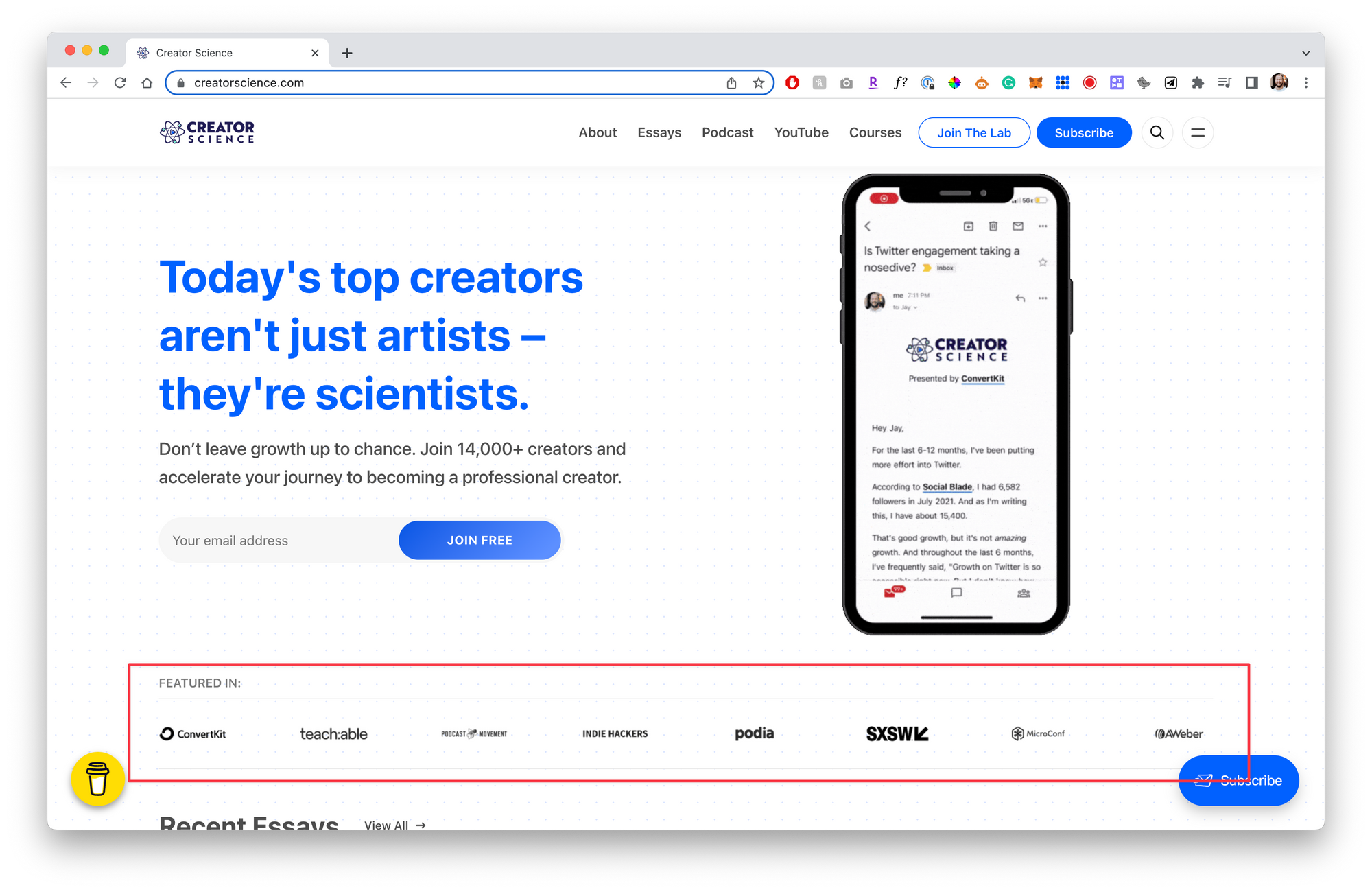
The more relevant those brands and institutions are to your audience, the more powerful they'll be. There are a lot of places I've been featured that I don't show here, simply because they wouldn't carry the same weight.
Some creators take this even further – my friend Khe Hy of Rad Reads showcases the logos of readers of his newsletter:
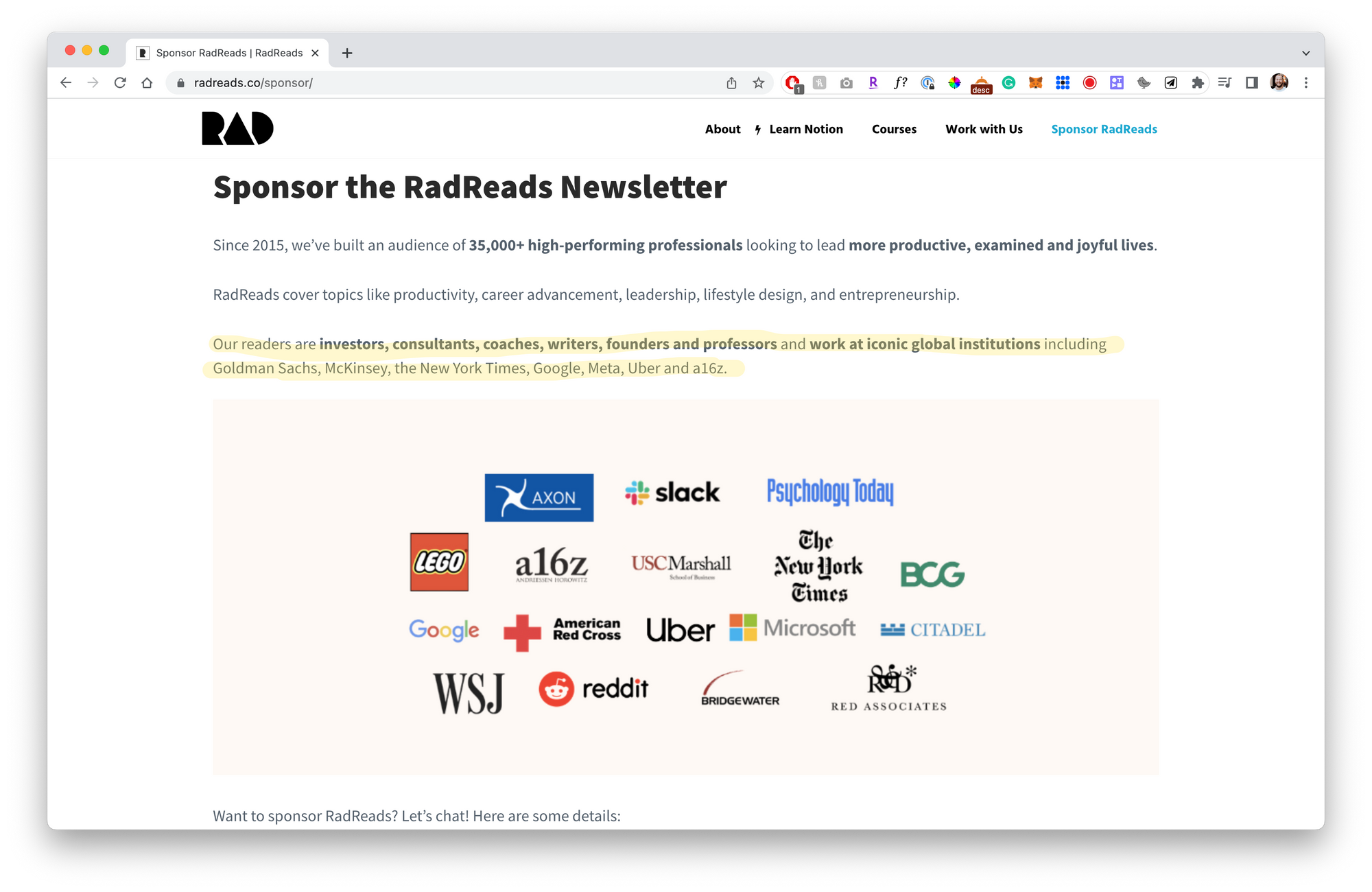
This is a factual claim that comes with the associated trust of those logos.
Now, are those readers the CEO of the company or an entry-level employee? Well, it's not stated either way, so its left up to the reader to draw their own conclusion.
Depending on how interested you are in leaving things up to interpretation, there are creative, TRUE ways to use logos like this that don't require a contract or partnership.
Customer volume
Another tried and true way to help people trust you more is to overwhelm them with the pure number of other people who already trust you.
This is especially used with newsletters or e-commerce.
The higher numbers you can (factually) claim, the better off you'll be.
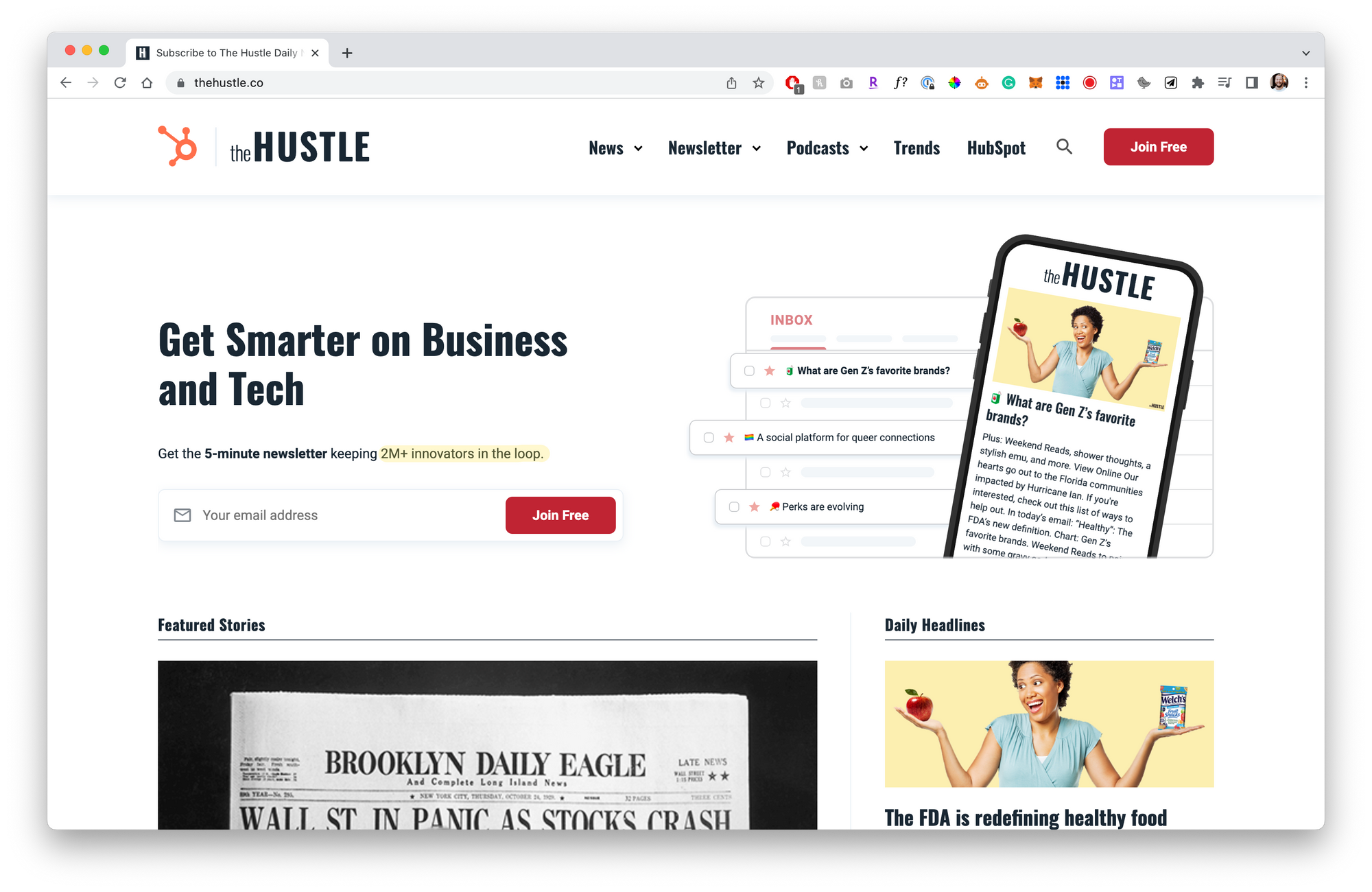
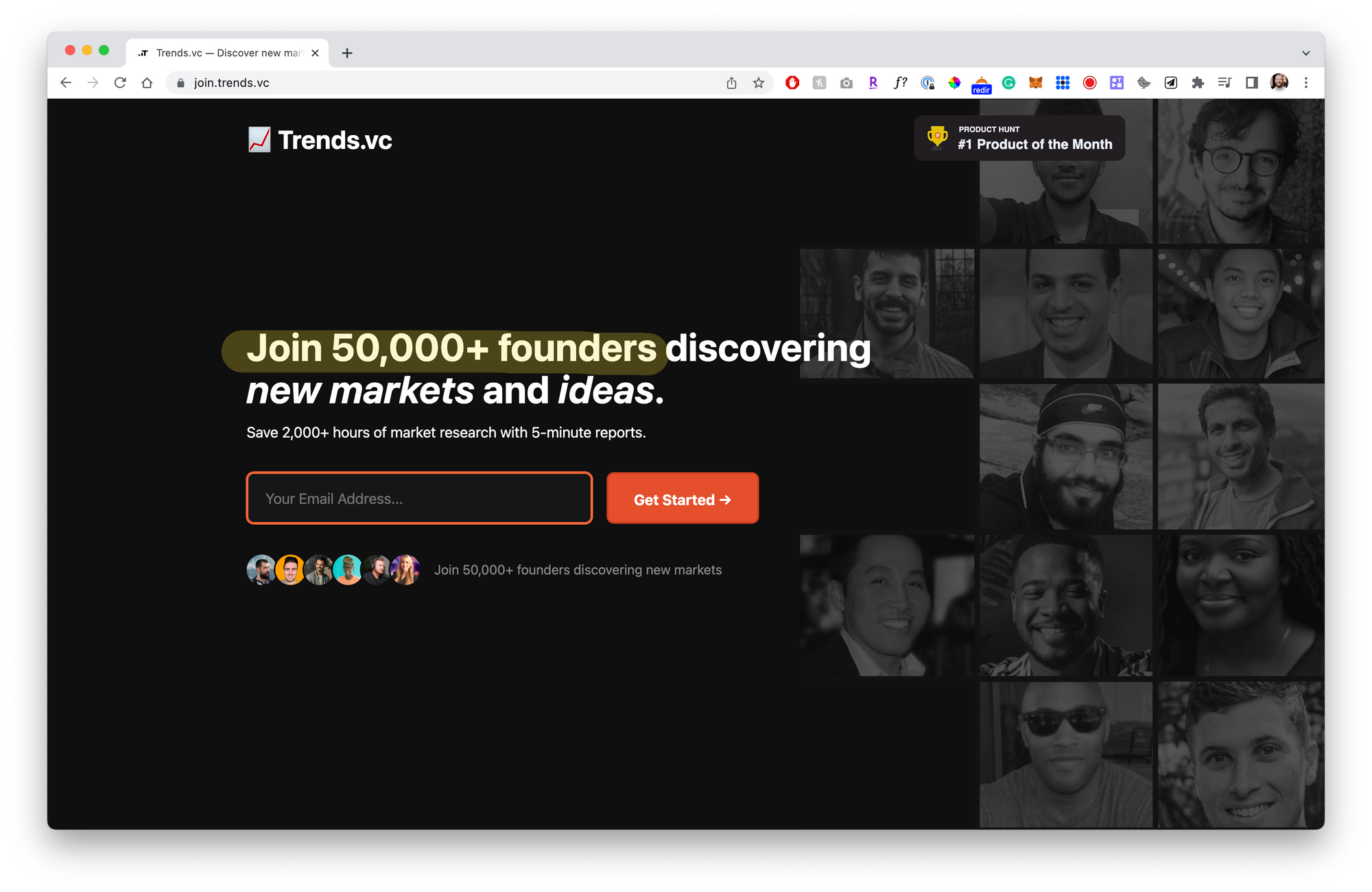
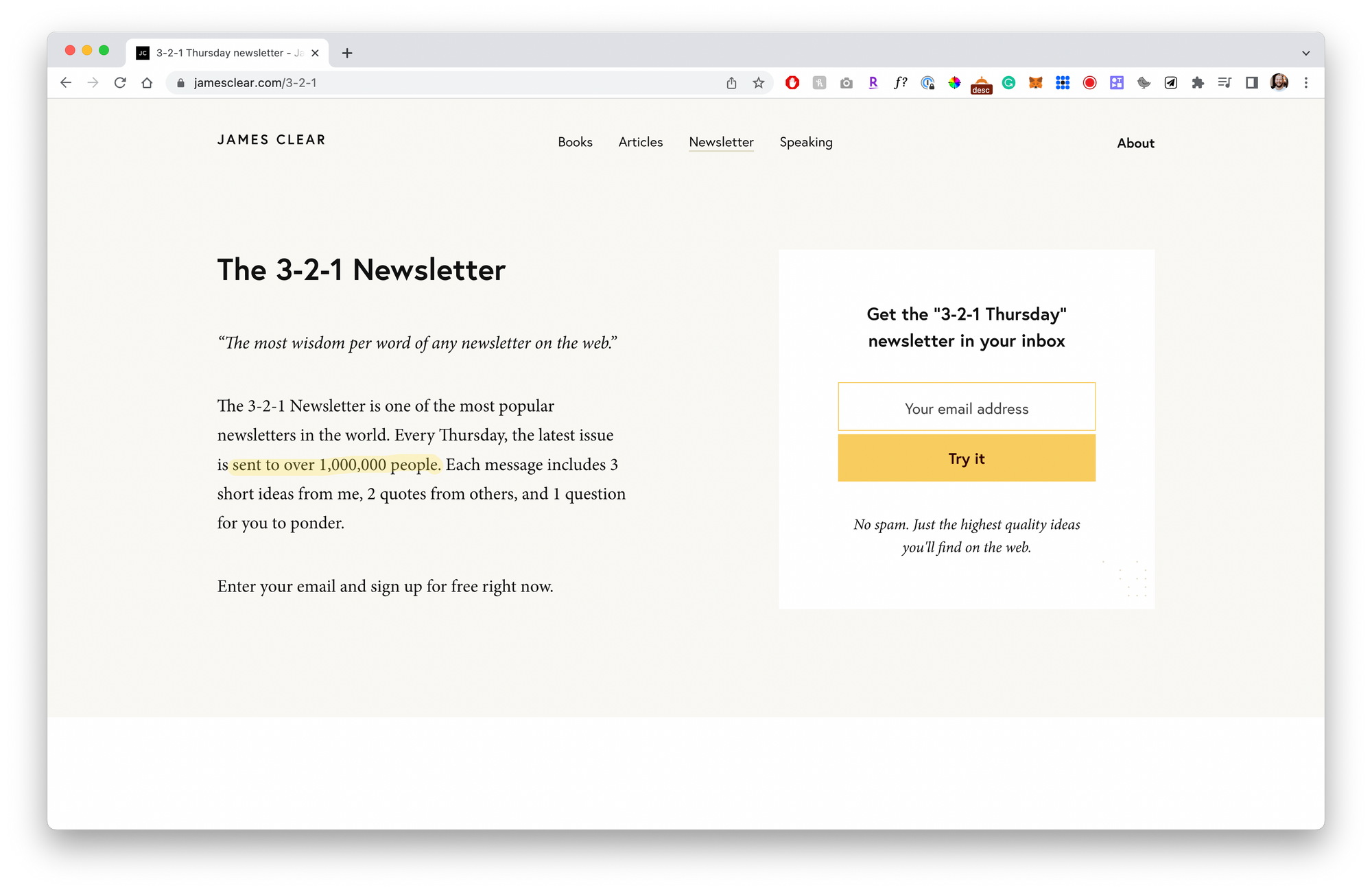
Customer profile
Before you have a high volume or clients or customers (quantity) you should focus on WHO you highlight (quality).
This is a super underutilized approach to social proof.
To some people, volume matters much less than the type of person who trusts you. They want to see themselves reflected in your social proof...especially if this is an ambitious person trying to improve themselves.
So you may want to highlight your most high-profile customers. If you have a customer who is a ringer (a high performer) you should lean into the trust in THAT person.
One of the first students to go through David Perell's Write of Passage school was Packy McCormick, who very quickly built his own public profile.

For a long time (and still to this day) David prominently displays Packy as an alumni of Write of Passage because a lot of aspiring writers know Packy and aspire to have his level of success.
The same is true for Dicky and Cole at Ship30for30.
One of their very first students was Alex Lieberman, the co-founder and former CEO of MorningBrew. At the time he went through Ship30, Alex was really focused on building his public profile on Twitter. So as Alex's profile grew...the prospect of joining Ship30 and being like Alex grew in value as well.
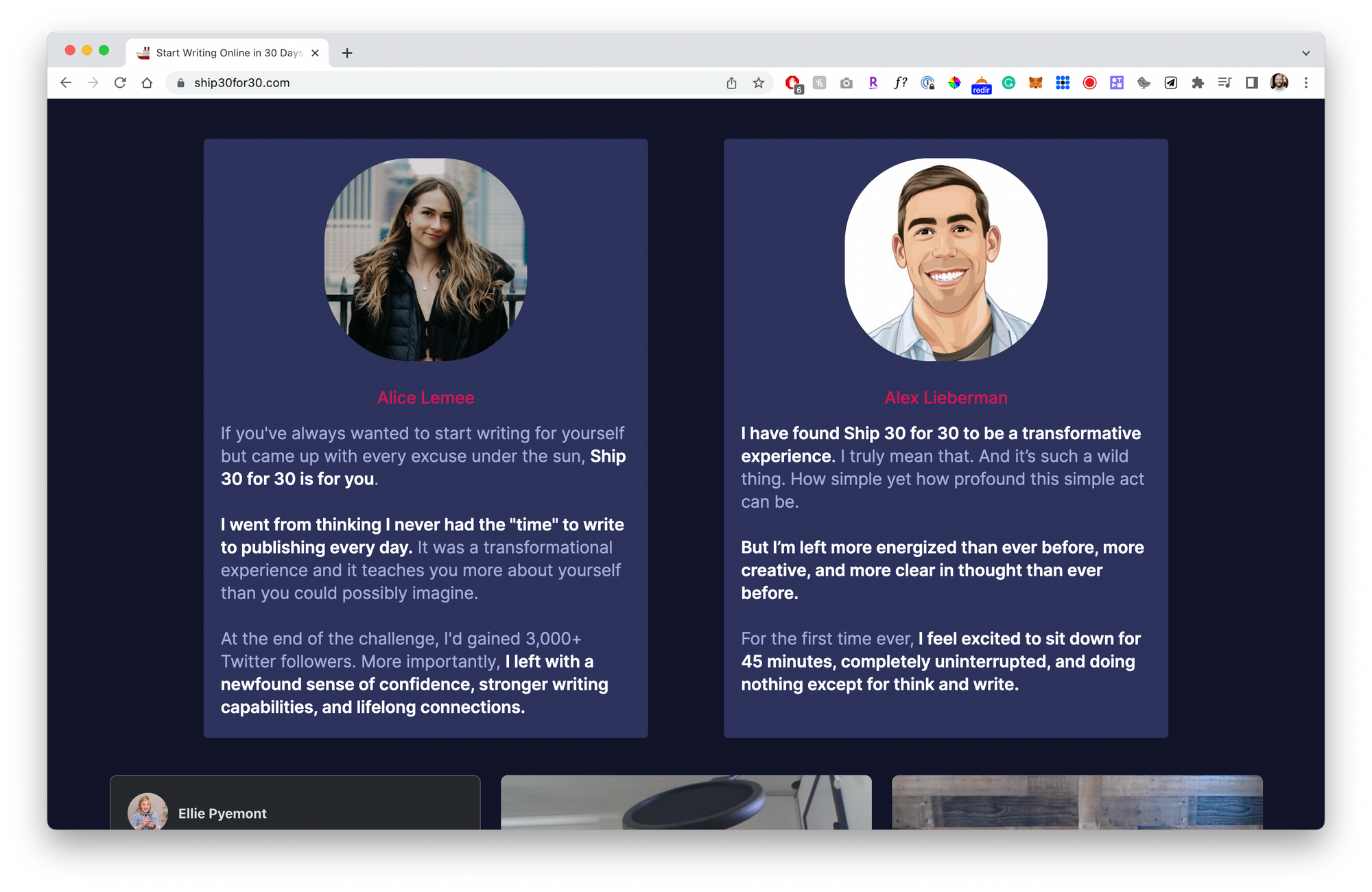
When people look at your work and see that OTHER people they already know and trust made the choice to buy from you...that's extremely powerful.
Ratings & reviews
This is very similar to the above, so I won't spend too much time here. But the pure volume of sales is not always as powerful as the actual reviews behind those sales.
When you go to Amazon and search for a product, what do you do?
If you're like me, you probably look first for a product with 1.) a lot of reviews and then 2.) the highest star rating with that relative number of reviews.
If you're like my wife, you'll go even further and read the specific written reviews for the ~3 star reviews to get the real honesty.
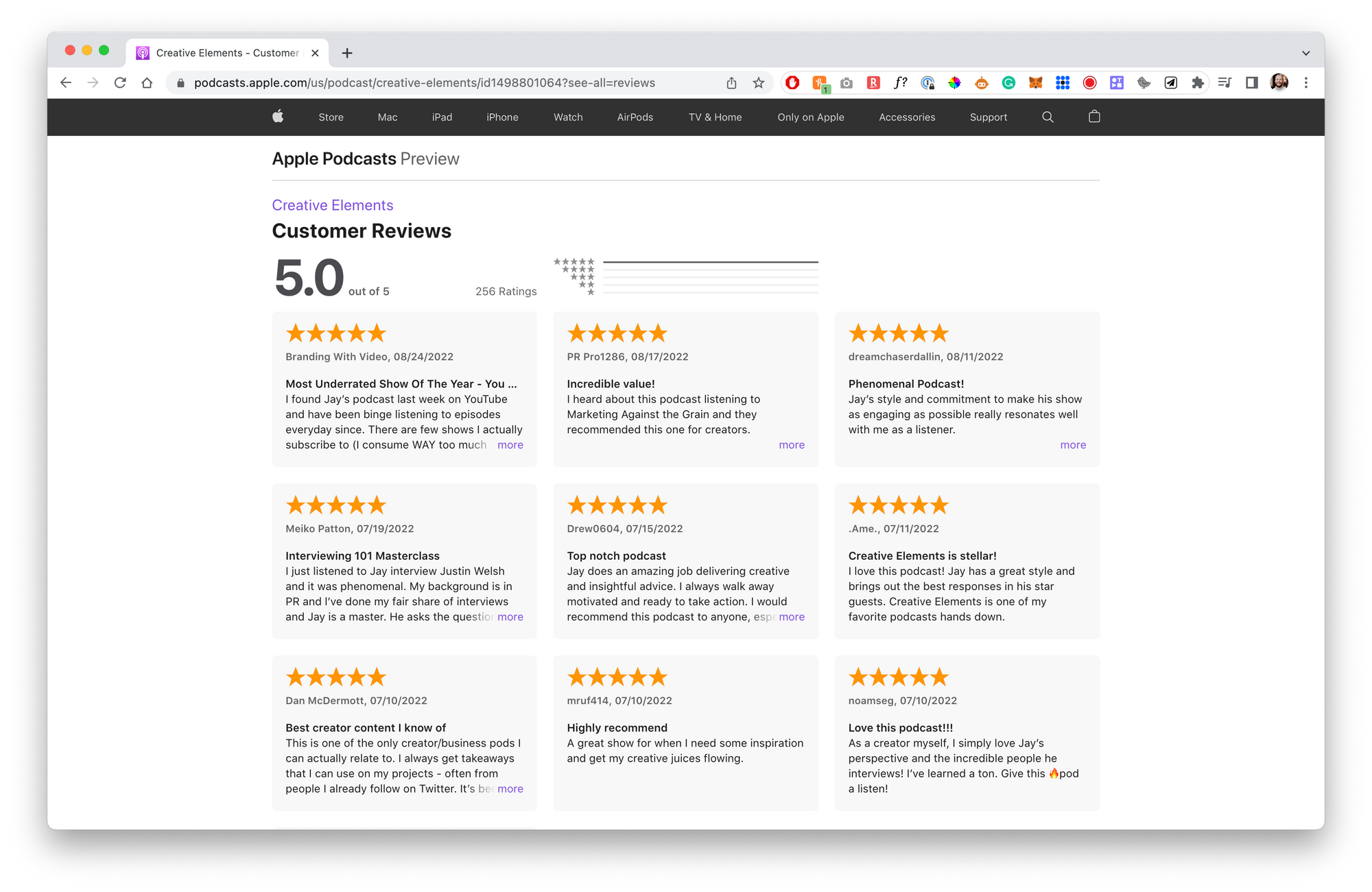
On the surface, reviews may seem to be the same thing as testimonials...but really, they promise a more honest and balanced perspective. We know testimonials are designed to be positive. So whenever possible, we opt to read reviews instead.
Testimonials & endorsements
At a minimum, if you're missing some of the social proof I've mentioned above, you should at least be able to pull together some testimonials – even if they are people giving a positive character witness for YOU personally.
If you have no testimonials, you might as well have no customers. Because that's what we'll assume – that you have no customers.
...and we certainly aren't going to be your first!
But here's the thing most people don't understand – most people will collect a small handful of testimonials and then stop. Three, four, maybe five testimonials representing dozens, hundreds, or even thousands of customers...that's what you'll find on most major websites.
So in the beginning you can be super economical. You can work with five customers in total, request a testimonial from each of them, and suddenly you're perceived to have as many (or more) customers as any of your competitors because you have the same number of testimonials!
But there's an important caveat – testimonials need to be authentic.
The most authentic testimonials are delivered on video, because we're wired to identify when someone is lying to our faces. And it doesn't even need to be good video...low production, highly authentic video testimonials are the best.
Sometimes, your customers try to do a great job by scripting their testimonial and then reading it on camera...but it's going to come across as, well, scripted. And that will trigger a red flag in the viewers brain as inauthentic (maybe even dishonest).
I've found that the best way to ensure a quality video testimonial is to simply as a client or customer if we can get on Zoom together for 10 minutes to record a testimonial. You can literally ask questions (on the spot) and be assured that you'll receive honest, unrehearsed responses. Then you can upload that full recording as a testimonial and viewers will know it was unedited (and therefore honest).
Here's an example from a previous program I ran:
But lately, I've been playing around with just collecting a mountain of testimonials. Check out how Justin Welsh showcases testimonials for his Content OS:

It's not even about asking you to take the time to read these testimonials...it's the combination of testimonials + volume. It's meant to make an emotional impact and remove any doubt that this is valuable.
Actual (Recent) Data
Swimming in the shark-infested waters of online business, I get targeted with a lot of ads from business coaches.
A lot of those creators will lean into some powerful, aspirational number that they have achieved and promise to help you do the same.
This is inherently a good approach – if I'm going to promise to help you achieve some specific metric of success, I should provide you evidence that I have done that before and can do it again.
It's exactlywhat I share on the sales page for my newest course, Build A Beloved Membership. I took a screenshot from Stripe to provide evidence that The Lab had already passed $100K in total sales this year:
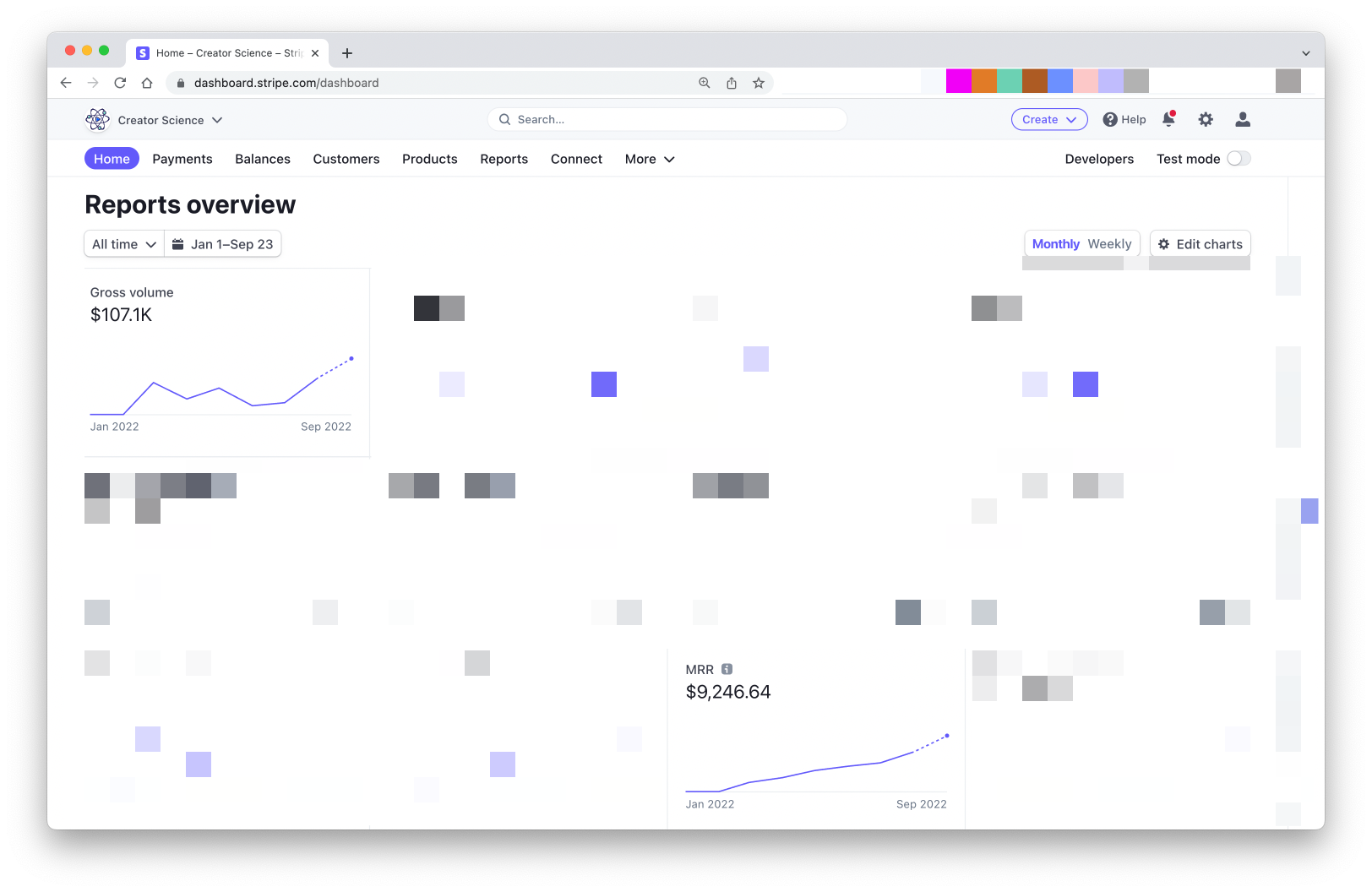
Evidence rooted in data like this is really, really powerful.
But if you're going to showcase evidence like this, you want it to be recent evidence.
One ad I keep getting served showcases how a course creator generated millions of dollars in sales through an ad funnel – and he showcases data to back up those sales numbers.
But the data is dated 2014-2015.
While 7-8 years ago may not seem like a long time ago, that was literally when Facebook ads were just being rolled out.
It may be a result someone aspires to, but if you don't also show that you've achieved that result RECENTLY, you may actually be causing more doubt than creating trust.
Why can't this person show more recent results?
Well, maybe they don't have them.
Clear Language
I've met a lot of great salespeople in my life.
The most effective salespeople I've seen in action say as little as necessary to give the prospect as much information as they need to make a decision.
Read that sentence again, because there are two important components:
- Giving as much information as necessary to make a decision
- Saying little or nothing else beyond that
People who use clear, economical language can more quickly build trust. It's not about a high volume of information...we don't want to consume more. We actually just want to have all of our important questions answered as quickly as possible.
If you can quickly give people the information they need to make a decision, that's a great experience. It's great experiential design!
Recently, I met Jeremy Mary who hosts a podcast called Backstage Careers. And he has one of the strongest, most clear show premises I've ever heard:

It's super clear what this show is, who it is for, and what you'll get from it.
When you provide clarity, you also give the appearance of nothing to hide and nothing to prove. If we don't think you're trying to prove or hide something, we're more likely to trust you.
Remember – less is more. It's much harder to sound smart than it is to sound like an idiot. And the less you say...the less likely you are to say something stupid.
Honesty
If you look at most sales pages, especially for courses, you'll likely see a section with a title along the lines of, "Who is this for?"
Erin Flynn is a member of The Lab and the creator of Out Of Office Entrepreneur. See how she adds this block on her sales page for All Systems Go:
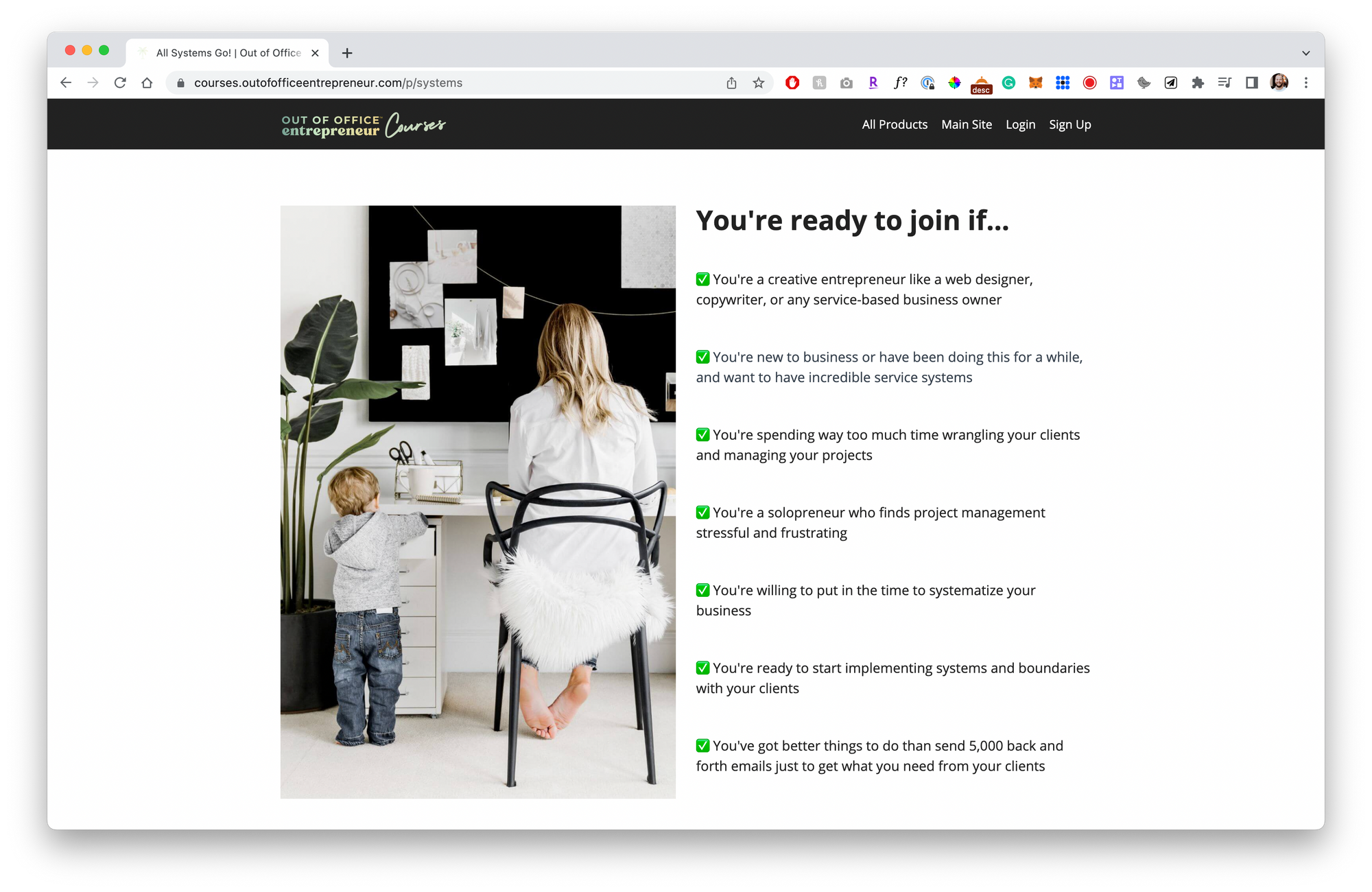
But even better than just having this block of who it is for, Erin includes who this course is NOT for:
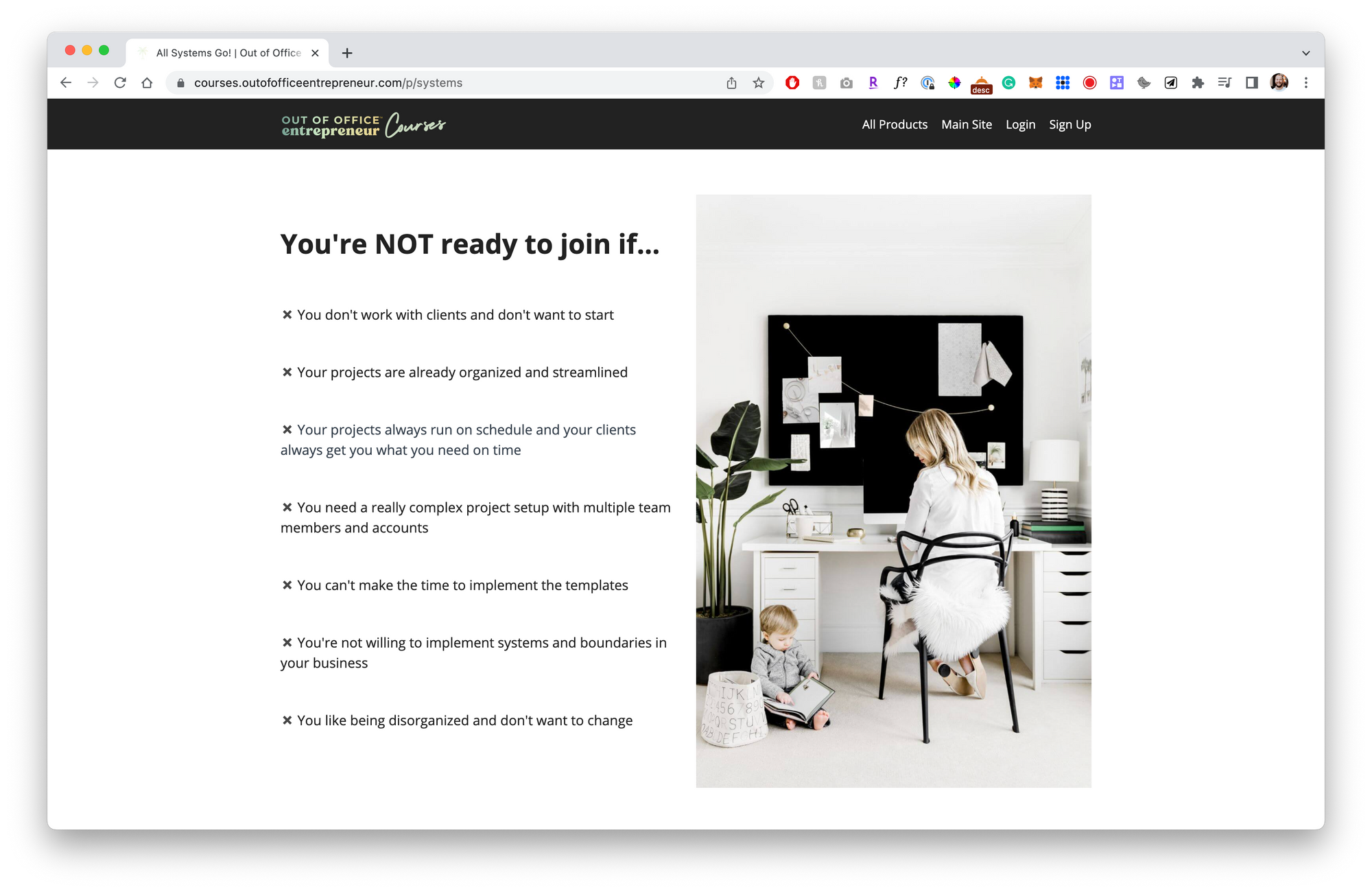
The more you honestly admit who your work is NOT for and give (the wrong) people an opportunity to opt out, the more you'll positively attract the RIGHT people.
Helping people disqualify themselves or owning the areas where your work might NOT be the right answer shows us that this isn't all about getting our money – you care about helping the right people.
While it may seem counterintuitive to actively tell people you can't help them, you'll actually receive more trust as a result.
Humanity
We are attracted to people that we can identify with. And when we see creators with a perfect-looking life who seem to have everything figured out, we actually don't identify with them.
We don't think we have a perfect life. We don't think we have everything figured out. We're all self-conscious – Kanye was just the first to admit it.
The more you can step into your humanity, the more people are going to like you.
Akta is a new member of The Lab (she also crossed 10K subscribers this week! 🎉) and she shared with me that her most popular video is based on the rise of YouTubers sharing their struggle with making friends:
Is there anything more human than that?
Add some of your unique voice and personality to parts of your platform. Maybe you quote a Kanye lyric in your essay.
One thing I like to do is actually showcase on my sales pages where the money from your purchase goes. Right now, my revenue is going to support growth on our YouTube channel. In the past, it's actually gone to support my wedding:
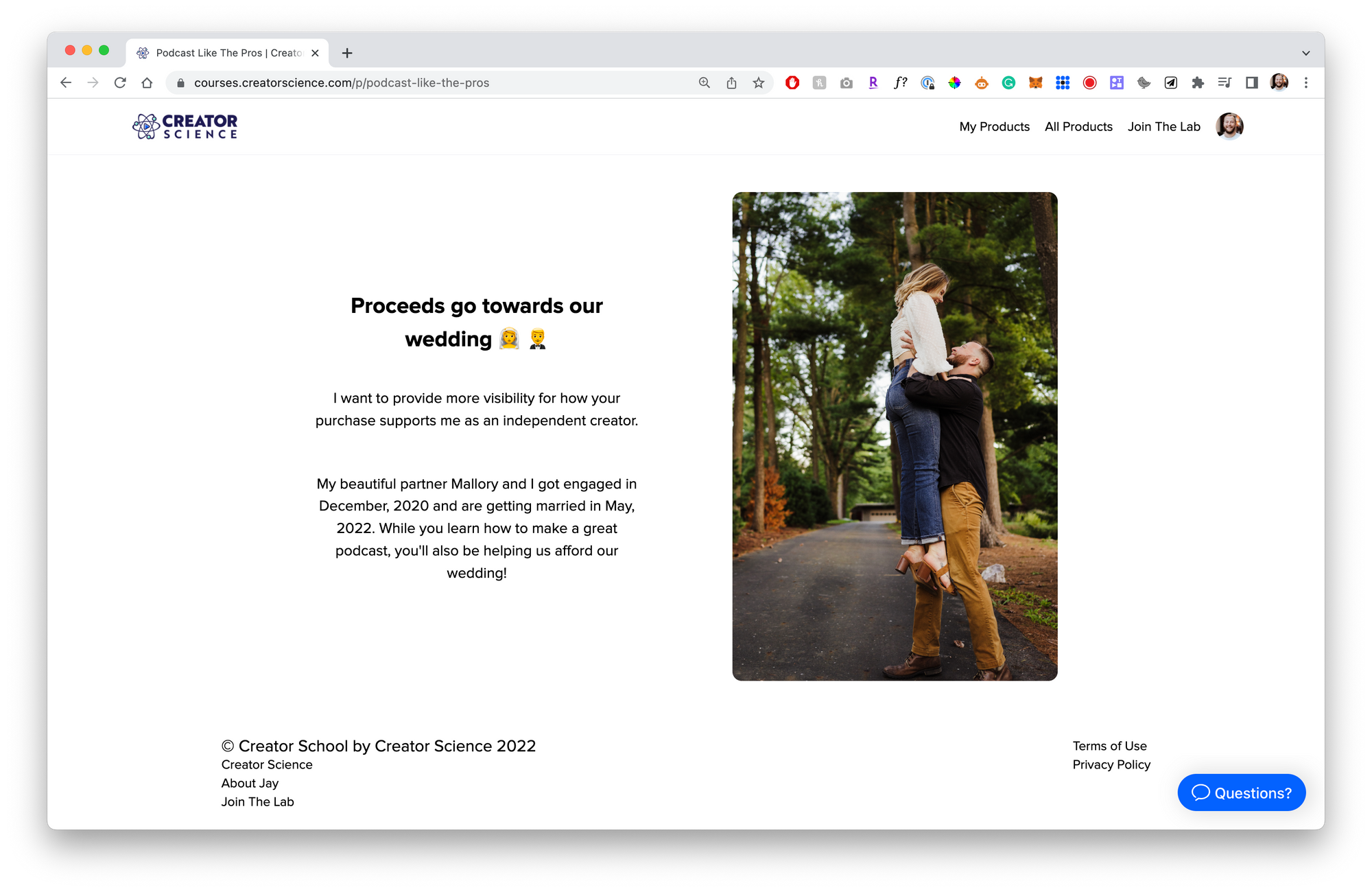
This is also why real photography is so much more powerful than stock photography. And why I will always, always recommend you use your profile photos to actually showcase your real, human face – close up!
We connect to people. We trust people.
Sprinkles
As I stated earlier, I truly believe that anything that can be designed should be designed.
When someone subscribes to my newsletter and needs to confirm their email address, they're redirected to a page with the URL creatorscience.com/purgatory.

I think it's hilarious. And I want every touchpoint that someone has with me and my work to feel intentional.
I constantly want to create thoughts of "Wow, he went out of his way to do THIS?"
But I have to admit, I learned this from Seth Godin.
At one point, he sent an email to alumni of his course The Marketing Seminar and said, "As an alumni, you can enroll at [super low price]. All you need to do is visit this page and click the purple circle."
What?
Sure enough, in the footer of that page was a small, out of place purple circle. And by clicking that circle, a coupon code was automatically applied.
These sprinkles of YOU really stand out. They show how much you care. And if you add these sprinkles all over things that people can see for free...imagine what it must be like for someone to buy something from you!
Another great example I think about constantly is when I bought 90 Day Year from Todd Herman back in 2017. After purchasing, I was redirected to a page with a welcome video from Todd. In that video, he flashed a phone number on screen and said, "Take a moment and save this number to your contacts – I like to call and check in with my students."
Sure enough, about 30 minutes later, I received a phone call from that number to welcome me to the course.
Now, that call was automated (and he said ON the call that it was automated) but holy shit what an incredible customer experience that was!
Go out of your way to add these sprinkles to your work.
Conclusion
I hope that this essay has gone to show you just how much you COULD improve your website and overall creative platform.
You're not going to implement all of these things overnight...but each one of these suggestions WILL help you appear much more legitimate.
But appearing legitimate is not the finish line – it's the starting line.
You MUST appear legitimate in order for you to achieve the results you want to achieve. It's prerequisite.
Even once you cross over the threshold from not looking legitimate to looking legitimate, you can still improve quite a bit.
There is a whole spectrum of legitimate creators – how far can you push yourself to be more legitimate than all of your competitors?
That's the journey I'm on. I hope you'll join me.



Join 54,000+ creators learning from firsthand experiments, expert interviews, and actionable advice every week.